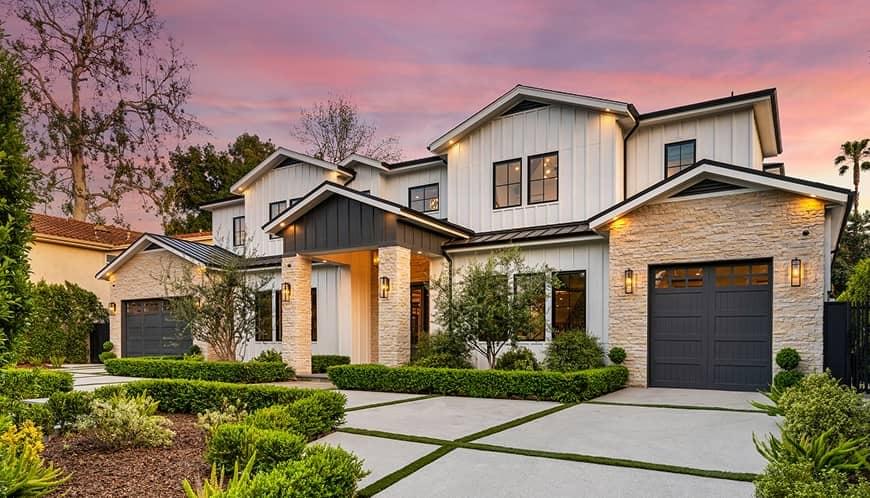Buying a new house vs. an older house

For Sale: Vintage charmer with rustic detailing in a historic quarter of town ...
Sure, sometimes that’s a seller’s code for “older home that needs updating in an older neighborhood,” but is it better to buy a new house, or are old homes OK to buy?
You’ll certainly weigh the classic style of an older home against the more modern amenities of a new place, but it might be possible to have both.
Whether you’re interested in an older home or want to purchase something new, getting pre-approved can streamline the process and help you plan your budget. Pre-approval also lets sellers and real estate agents know you’re a serious homebuyer.
Should I buy a new home or an older home?
Your needs and interests will help you determine whether to buy a new home or an older one.
If modern amenities like an upgraded kitchen, energy-efficient windows and new heating or air conditioning systems are important to you, a new home might be the right choice.
If you like the look and craftsmanship of older homes, with built-in bookcases, vintage flooring and a few projects you’d like to do yourself, older homes could be just what you’ve been looking for.
What are the benefits of buying a new house?
New homes will come with conveniences and amenities you won’t find in older homes, and you will have fewer repairs to worry about in the first years in your new house.
Here are some advantages of a new home to consider.
Lower initial maintenance costs
In a new home, you won’t have to worry about when the roof will need to be replaced, how long that water heater will last or whether you’ll need a plumber under the kitchen sink fixing a leak.
Knowing you will save money on initial maintenance costs could give you some peace of mind and could even help you afford more home than you expected.
Modern amenities
Many new homes come with amenities like granite or quartz countertops on kitchen islands, smart-home technology throughout the home and flexible work and living spaces.
They will also allow for modern appliances like big refrigerators, washers and dryers. This is important if you have or plan to have a large family.
Energy-efficient
Modern windows like dual- or triple-pane models can go a long way toward keeping your home warm in winter and cooler in summer.
Updated furnace and air conditioning systems also use less energy than older models. An option like heated floors in certain parts of the country can also help save on heating costs.
Getting a sense for how much you’ll save on monthly energy bills could help you determine your overall homebuying budget.
Buying a new house is a simple process with the help of Rate’s mortgage experts, and our mortgage calculator can help you determine how much house you can afford.
What are the benefits of buying an older house?
Let’s face it: Some older homes can be really cool. Certain architectural touches, built-in wall units and fireplaces, and even those creaky original wood floors have a level of charm and nostalgia you won’t get in a new home. Here are some other advantages of older homes to consider.
Unique design
Many older homes were custom-built or will at least have been customized by previous owners over the years. Chances are you’ll have the only home exactly like yours even on a block with similar models.
You might even want to do some customizing of your own either before you move in or once you’re settled.
Does the home need new energy-efficient windows? You can swap out the old ones.
Are the floors worn and carpets tattered? Those can be replaced.
Do you want air conditioning? You can add that.
That’s where a Rate home renovation loan could help you get into a home and pay for upgrades and repairs with one monthly payment.
Price history
A home that’s been bought and sold a few times will have a price history that you can look up.
You can also compare the asking price to homes recently sold nearby to see if it’s in line with the local market.
Knowing the value and recent prices of homes in your area can help you negotiate a better final price.
Established landscaping
Homes in older neighborhoods often have landscaping already done. You might even find a home with mature fruit trees and well-kept lawns.
Landscaping and hardscaping around a new home can cost a lot. It also takes time for trees, shrubs, and grass to grow. This will help your house look more like a lived-in home.
It’s important to understand how much you could save by buying a home with yards already in place.
Whatever your decision, new home vs. old home, don’t go into the homebuying process without educating yourself first. And when you’re ready to begin your search, Rate has tools that can help you find your dream home.
How do I choose between an older or newer house?
Rate offers loans to fit nearly every situation, so deciding on a new house vs. an older home will depend on several factors you’ll want to consider.
- Do you want certain conveniences of a new home immediately, or will you be comfortable adding them at some point to an older home?
- If a finished yard is important, will you have the cash to complete landscaping needed for a new home?
- Are unique, classic or an era-specific styles a factor in your decision, or can you live with a new home that’s similar to others on your block?
In the end, what matters most is how well the home you choose fits your lifestyle and your budget. You know your lifestyle better than anyone, but getting pre-approved with Rate could help you determine how much you can afford and could speed up your homebuying process.
Applicant subject to credit and underwriting approval. Not all applicants will be approved for financing. Receipt of application does not represent an approval for financing or interest rate guarantee. Refinancing your mortgage may increase costs over the term of your loan. Restrictions may apply.
All information provided in this publication is for informational and educational purposes only, and in no way is any of the content contained herein to be construed as financial, investment, or legal advice or instruction. Rate does not guarantee the quality, accuracy, completeness or timelines of the information in this publication. While efforts are made to verify the information provided, the information should not be assumed to be error-free. Some information in the publication may have been provided by third parties and has not necessarily been verified by Rate. Rate its affiliates and subsidiaries do not assume any liability for the information contained herein, be it direct, indirect, consequential, special, or exemplary, or other damages whatsoever and howsoever caused, arising out of or in connection with the use of this publication or in reliance on the information, including any personal or pecuniary loss, whether the action is in contract, tort (including negligence) or other tortious action.




